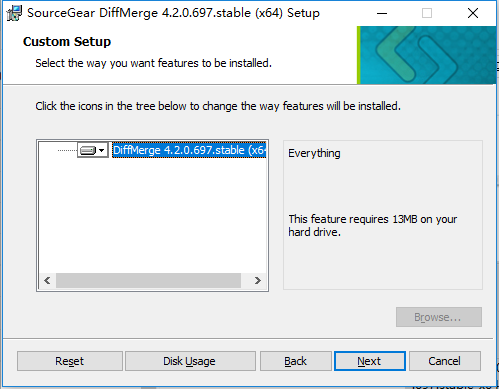
For example: > git difftool master file1. This will allow you to compare two different versions of files visually. > git config -global "diffmerge \$LOCAL \$REMOTE" You can setup Diffmerge to be your visual diff tool by running the following commands in your terminal: > git config -global diff.tool diffmerge
Diffmerge mac download portable#
These tools are called diff tools and are commonly used to compare changes between revisions. Download Portable SourceGear DiffMerge 4.2.0. Sometimes you may want to compare two revisions to see what’s changed.

To start a three-way merge and perform a visual merge for each file in conflict, run the following command: > git mergetool > git config -global trueĭiffMerge is now the default tool. > git config -global "diffmerge -merge -result=\$MERGED \$LOCAL \$BASE \$REMOTE" Run the following commands in your terminal: > git config -global merge.tool diffmerge Now that we have DiffMerge, let’s make it our default merge tool for git. You will also see the differences being highlighted. You should see a window pop up with these two files being displayed side-by-side. You should see the DiffMerge window pop up. If you want to compare two random files, type the following on the terminal: > diffmerge file1.py file2.py Once you run the installer, just type the following on your command line to see if diffmerge works: > diffmerge Before we start, make sure you download the DiffMerge OSX installer from here.
Diffmerge mac download how to#
I will be describing how to set it up in Mac OSX, but the rules are more or less the same for any Unix-style system. During a conflict, you are presented with the version of the branch you are working on, the common file ancestor, and the branch you are merging in. The three versions being the old one, the current one and the new one that will go into the repo. DiffMerge is one such tool and Git allows using it as opposed to using the default tool that comes with Git.ĭiffMerge is great to perform 3-way merges as it supports 3-way file comparison. Luckily, to make the merge less painful, there are visual tools that assist us in doing this.


The only solution when this happens is to merge them manually. The conflicted file gets filled with these annoying signs – “>”. When Git cannot automatically merge changes, a merge fails and it will show warning messages. Here on earth, conflicts happen all the time. If people are working on different things that are independent of each other, then there will be no problems. Most of the version management tools try to manage this automatically. If it hasn’t happened to you yet, then you haven’t been coding long enough. Merge conflicts are bound to happen when you are working in parallel with a team of developers.
Diffmerge mac download code#
Okay that was a joke! Too subtle? Anyway, when you are working in a team on a central code base, multiple people might end up modifying the same thing, which usually results in a conflict. To people who don’t know what merge conflicts are, they are these magical things that make our life pleasant when we are coding in a group.


 0 kommentar(er)
0 kommentar(er)
